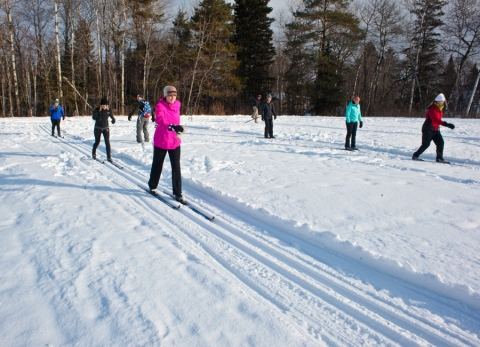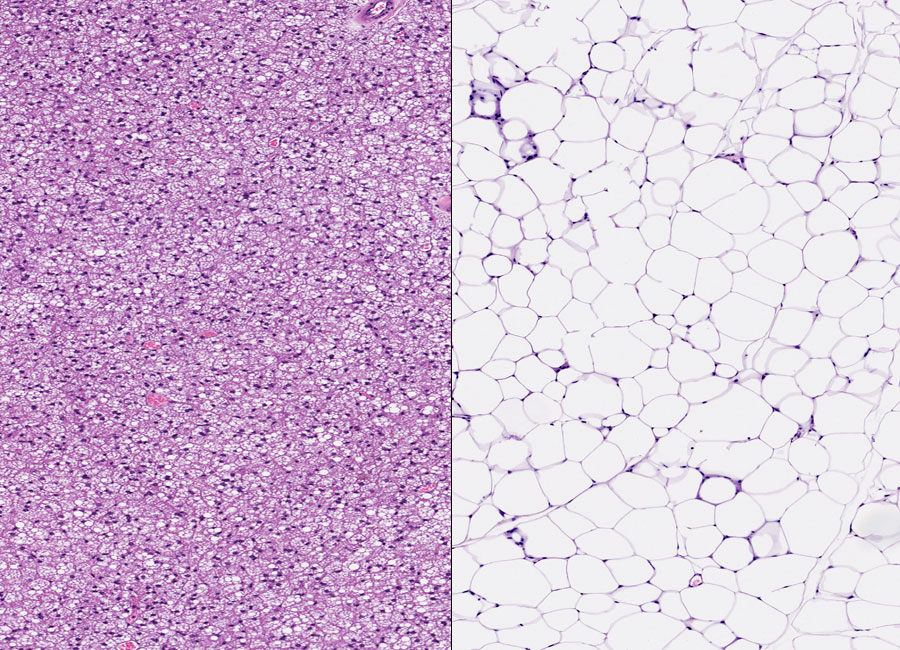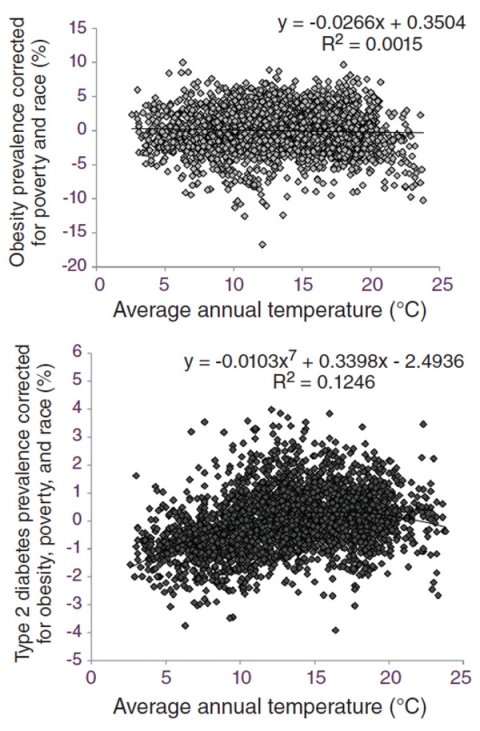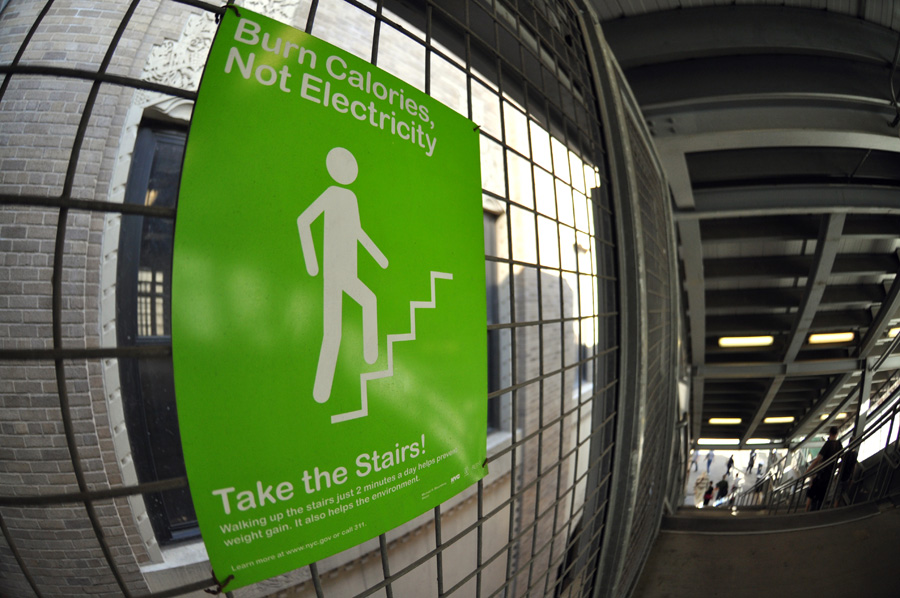Newborn babies have it. Gray squirrels and naked mole rats have it. It is called brown adipose tissue, or brown fat. Unlike white fat, which simply stores calories, brown fat burns energy and produces heat. It helps newborns—who cannot shiver—warm their bodies when they are cold. It also helps small animals avoid hypothermia and survive frigid winters.
Scientists used to think that adult humans do not have brown fat. “As you get bigger your surface-to-volume ratio changes,” said biologist John R. Speakman, a professor at the Chinese Academy of Sciences in China and the University of Aberdeen in Scotland. “So, your need for heat decreases the bigger you become.”
But in 2009, researchers discovered that adult humans have some of it too. Soon after, another study found more brown fat in lean adults than in those who are obese.
The idea that adult humans have fat cells that can burn energy when exposed to cold temperatures fascinated scientists, particularly those in obesity research. Could humans someday just pop a pill to activate this brown fat and lose weight?
“That’s kind of the dream,” said Speakman, who has been studying obesity for 20 years. It could be a dream for the United States, where more than one third of the population is obese and where one in eleven people have obesity-related type 2 diabetes.
“The United States is only ninth in the world for obesity,” Speakman said. “But it’s the biggest country that’s high on the list. Other countries that rank higher are mostly small countries. America is the first country that’s got millions and millions of obese people and therefore it’s a massive health issue.”
Little furnaces
The US Centers for Disease Control and Prevention (CDC) describes an obese person as one whose body mass index (BMI) is above 30. A normal BMI ranges from 18.5 to 24.9. The condition increases a person’s risk for heart disease, stroke, cancer, and type 2 diabetes.
Obesity and type 2 diabetes are closely linked, as the risk of type 2 diabetes rises with increasing body weight for people of all ages. Long-term and untreated type 2 diabetes can lead to disabling and life-threatening complications affecting the heart, blood vessels, nerves, eyes, and kidneys. As of 2008, the annual medical care costs of obesity were estimated at $147 billion and as of 2012, the costs for diabetes were $245 billion.
The standard treatment for obesity is to tell people to eat less and exercise more. Physicians have been telling obese patients this for as long as there has been obesity—and it has never worked. In addition, while there have been several obesity medications, they have generally had to be withdrawn because of side effects.
However, Speakman and other obesity researchers wonder if it can be treated by exposing patients to low temperatures. The theory is that cold can activate a person’s brown fat cells and that these burn calories while they are turned on. “One interesting observation is that brown fat seems to be more abundant in the winter than in the summer,” Speakman said. “It looks like it’s switched on seasonally.”
Speakman describes brown fat cells as “little furnaces.” In human babies, it has been found between the shoulder blades, around the collar bones, near the heart, kidneys, pancreas, and windpipe. In most small mammals, the cells are also in a patch of tissue between the shoulder blades. “Like a little radiator in the back,” Speakman said.
“It gets more complicated,” he said. “It turns out that there is a third type of fat cell known as the beige cell, because it’s somewhere between white and brown.” A beige fat cell can switch what it does according to what the body needs. So, if the body needs to store calories it turns into a white cell and if the body needs to produce heat it can turn into a brown cell.
“It means there must be sort of a molecular switch that you can use to convert these beige cells from a white form into the brown form, and we think that switch can be turned on by exposure to cold temperatures,” Speakman said. He wanted to test if that idea really holds water. He said, “If that’s true, the further north you go where it’s colder, there should be less obesity.”
Data digging
To explore this, Speakman probed the distribution of obesity across the United States. He acquired county-level obesity and type 2 diabetes data from a CDC study that has been running since 1984 and includes more than 400,000 people. He also found county-level air temperature data from NASA's Oak Ridge National Laboratory (ORNL) Distributed Active Archive Center (DAAC). The data set includes data on historical climate across all counties in the United States, as well as other environmental characteristics, such as soils, air and water quality, industrial activity, and other factors that may be linked to human health.
“We looked at the data and actually that’s true,” Speakman said. “If you just look at the crude analysis there’s a small effect of temperature. So, the colder it gets the less obesity there is.”
What stunned Speakman was the type 2 diabetes prevalence. “If you live in an area where the average temperature is 5 degrees Celsius [41 degrees Fahrenheit], you have about an 8 percent risk of diabetes,” he said. “Whereas if you live in an area where the average temperature is 22 degrees Celsius [72 degrees Fahrenheit], then it’s about a 12 percent chance.”
However, Speakman needed to eliminate other factors in the warm areas that may be causing obesity and diabetes—factors that have nothing to do with temperature. “The classic factors that are associated with obesity and diabetes are poverty and race,” he said. “We wanted to statistically remove those effects and see if temperature still had an effect.”
After running the numbers, the relationship between temperature and obesity completely disappeared. “This whole idea that you might be able to pop a pill and it’ll switch on all your beige fat cells and they’ll burn off all your fat is probably not going to work,” he said. “It’s kind of disappointing because that was initially the motivation, but what was amazing was that the diabetes effect was still there.” What started out for Speakman as an intent to find a treatment for obesity resulted in a possible route to treating type 2 diabetes.
Speakman thinks this might be because brown fat cells use a lot of glucose to produce heat. In type 2 diabetes, the body does not use insulin properly, causing insulin resistance. The pancreas makes up for this by making extra insulin to manage high blood glucose levels. Over time, the pancreas will not be able to keep up and make enough insulin to maintain blood glucose at normal levels. So, brown fat cells may protect patients from diabetes. “When you eat something sweet, the brown fat act as a sort of buffer that can soak up all this glucose,” Speakman said. “So, you don’t put as much pressure on your insulin production.”
Cold treatment
Other researchers have also homed in on the connection between brown fat and type 2 diabetes. Around the same period that Speakman was conducting his study, researchers in the Netherlands’ Maastricht University exposed eight patients with type 2 diabetes to a cold environment of 14 to 15 degrees Celsius (57 to 59 degrees Fahrenheit) for ten days. The patients’ insulin sensitivity had improved by up to 43 percent—a distinct improvement. Strangely, however, the researchers observed only a small increase in the patients’ brown fat activation after the cold treatment.
While both Speakman’s study and the Netherlands study point to a possible treatment for type 2 diabetes, Speakman said, “The bottom line seems to be a whole lot more complex than this simple idea that cold switches on your brown adipose tissue and cures your diabetes.”
“It could be something else,” Speakman said. “It could be that cold exposure increases your ability to dispose of glucose in your muscles.” It could also be because people who live further north get more sunlight and vitamin D because of long summer days. “That could possibly influence the diabetes,” Speakman said. People with type 2 diabetes generally have poor vitamin D levels compared to people who do not have the disease.
And while the Netherlands study is encouraging, Speakman acknowledges that it is not practical to treat people with diabetes by sticking them into cold rooms. In that study, the subjects had to sit in a cold room for up to six hours a day. “There could be other complexities with that because diabetics have poor peripheral circulation,” Speakman said. “You could improve the diabetes, but you could cause some other problems with circulation in the legs. We need to think it through a bit more carefully.”
Speakman’s next step is to consider what his findings might mean for the United States in terms of health policy and governance. Ideally, warmer states should allocate more money to handle diseases that can be triggered by high temperatures. “That might have implications in terms of global warming,” Speakman said. “If we are predicting that states are going to experience increases in temperature, and if this is a causal relationship, then that’s likely to lead to an increase in spending on type 2 diabetes.”
References
Hansen, M. J. W., J. Hoeks, B. Brans, A. A. J. J. van der Lans, G. Schaart, J. J. van den Driessche, J. A. Jörgensen, et al. 2015. Short-term cold acclimation improves insulin sensitivity in patients with type 2 diabetes mellitus. Nature Medicine 21: 863–865. doi:10.1038/nm.3891.
Olson, R. J., C. J. Emerson, and M. K. Nungesser. 2017. Geoecology: County-Level Environmental Data for the United States, 1941–1981. ORNL DAAC, Oak Ridge, TN, USA. doi:10.3334/ORNLDAAC/656.
Speakman, J. R. and S. Heidari-Bakavoli. 2016. Type 2 diabetes, but not obesity prevalence is positively associated with ambient temperature. Scientific Reports 6: 30409. doi:10.1038/srep30409.
For more information
NASA Oak Ridge National Laboratory Distributed Active Archive Center (ORNL DAAC)
| About the data | |
|---|---|
| Data set | Geoecology: County-Level Environmental Data for the United States, 1941 to 1981 |
| Resolution | County-level |
| Parameter | Monthly average temperatures |
| DAAC | NASA Oak Ridge National Laboratory Distributed Active Archive Center (ORNL DAAC) |



